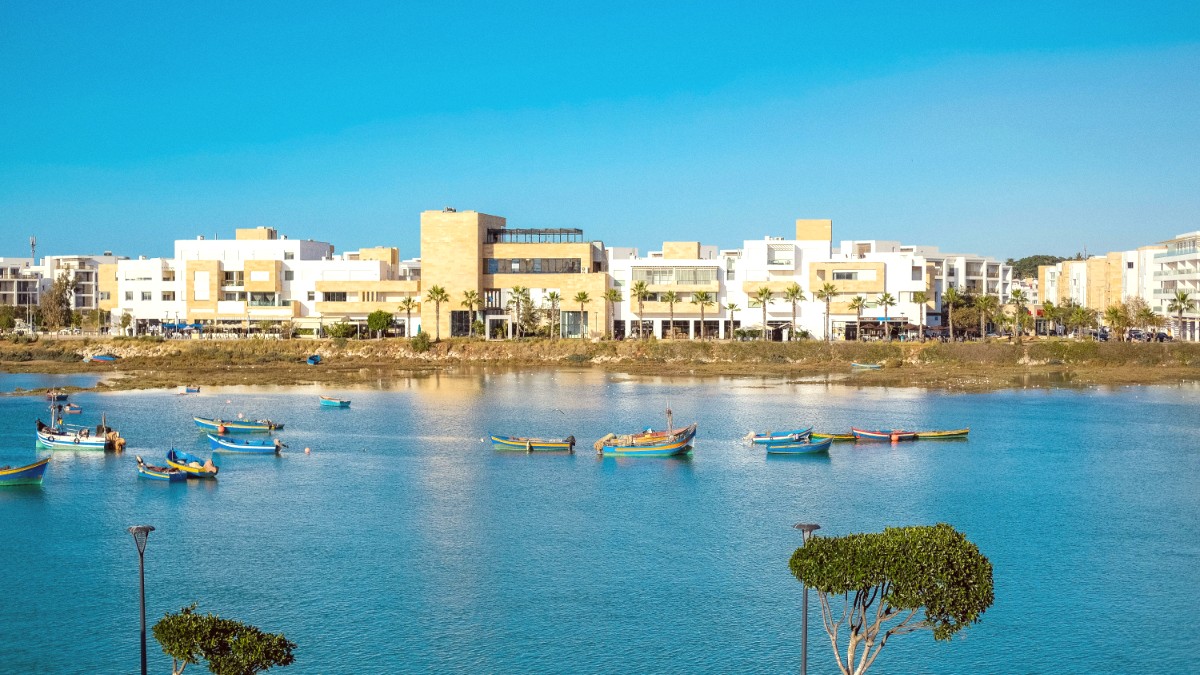
Morocco
Moroccan cuisine blends Arab, Berber, Andalusian, and Mediterranean influences. This long history creates an unique flavor profile. Food is central to Moroccan hospitality and social life.
Dishes frequently feature lamb, beef, chicken, fresh fish, and a wide array of vegetables. Legumes, couscous, various breads, olives, preserved lemons, and argan oil are consistently present. Spices like saffron, cumin, turmeric, ginger, paprika, cinnamon, and fresh herbs balance flavors.
Often light: bread, olives, cheese, mint tea. Also m'semen or baghrir.
Typically the main meal, 1:00 PM to 3:00 PM. Many businesses close during this time.
Usually later, from 8:00 PM onwards. Can be lighter than lunch in traditional homes.
Slow-cooked stew in a conical clay pot. Options: lamb with prunes, chicken with preserved lemon, or vegetable.
Widely available in most restaurants and local eateries.
Steamed semolina grains with a rich meat (lamb, beef, chicken) and vegetable stew. Traditionally a Friday dish.
Many restaurants offer it throughout the week.
Hearty lentil and tomato soup, garnished with lemon and coriander. A Ramadan staple, but available year-round.
Found in local cafes and restaurants, especially in winter.
Sfenj (doughnuts), m'semen (flatbread), baghrir (pancakes), fresh juices, and grilled brochettes.
Mint Tea (Atai), fresh orange juice. Alcohol exists in licensed hotels and some restaurants. Morocco produces local wines and beers.
Upscale restaurants, often in modern districts (Hassan, Agdal) or luxury hotels. Refined Moroccan cuisine and international dishes. Higher prices, excellent service.
Abundant throughout the city. A mix of traditional Moroccan dishes and international fare (French, Italian). Comfortable dining experience, wider menu.
Best in the Medina and around local markets. Inexpensive yet delicious options: tagines, couscous, grilled skewers, various breads and pastries.
The Central Market is a great place for fresh produce, spices, and small food stalls. An immersive sensory experience.
Marché Central: Fresh produce and quick bites.
Mainly in modern areas like Agdal. French, Italian, Asian, and other global cuisines. Alternatives to Moroccan fare.
Agdal: Diverse international choices.
Vegetable tagines, couscous, salads. For vegans, inquire about butter (smen) use. Specify "bila laham" (without meat).
All meat is Halal. Kosher food is generally not widely available, but by arrangement in specific Jewish communities.
Bread is central. Tagines, grilled meats/fish, salads are often naturally gluten-free. Language barriers may exist; consider an Allergy translation card.
Inform accommodation in advance. Websites/apps dedicated to dietary needs can list relevant restaurants.
Check local calendars for gastronomic events showing regional specialties. Mawazine Rhythms of the World (June/July) is a major music festival.
Local religious festivals (Moussems) offer unique insights.
Some larger riads or hotels feature traditional dinner shows with live music. A traditional Moroccan hammam often includes a light meal or tea.
A culturally immersive and relaxing experience.
Organizations sometimes connect with community projects in surrounding rural areas. These focus on cultural exchange and sustainable development.
Organized tours for farm visits from Rabat are less common. Excursions into rural areas might offer glimpses into olive oil production or local farms.
Vegetable tagines, vegetable couscous, salads, and lentil soup are common. For strict vegans, inquire about butter (smen) or animal fats.
All meat in Morocco is Halal. Kosher food is generally not widely available in restaurants but can be found in specific Jewish communities or by arrangement.
Eating gluten-free can be challenging due to bread's centrality. Tagines, grilled meats/fish, salads are often naturally gluten-free. Inquire about cross-contamination.
Local places often use fresher ingredients and traditional methods. Look for busy spots.
Authentic flavors, good value.
Accepting mint tea is a sign of respect and connection. Enjoy the communal aspect of meals.
Food is central to social life.
Many riads and culinary centers offer hands-on classes to prepare Moroccan dishes.
Guide you through local markets and street food stalls, offering tastings and insights.
Excursions to rural areas sometimes offer glimpses into olive oil production or local farms.
Exploring Rabat's culinary scene is a journey in itself. Embrace new flavors and dining customs.